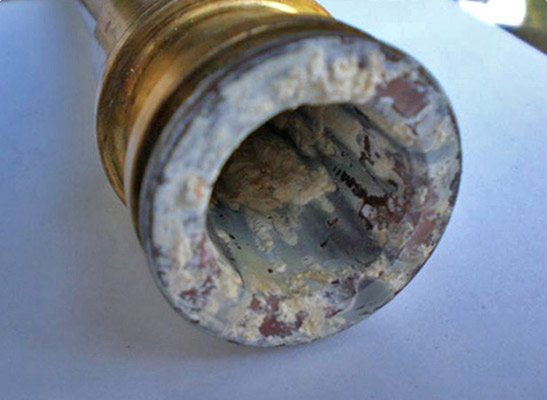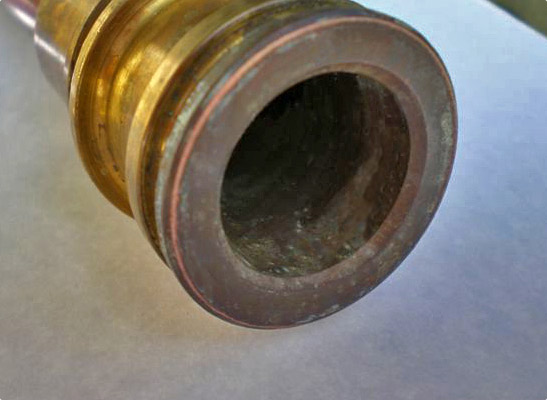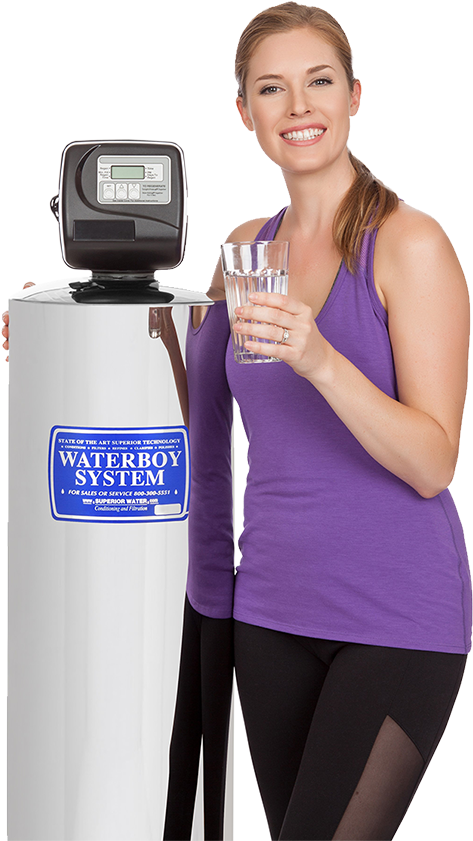Technology
Contact Us and Order Yours Today

Water Conditioning & Descaling Technology
Superior Water is dedicated to providing chemical free solutions for water treatment. Superior products is one of today’s industry leaders with a history of research and development that has produced proprietary technology.
This is not only cost efficient but friendly to the environment.

NO CHEMICALS

NO ELECTRICITY

NO MAINTENANCE
Waterboy Technology
Water based cooling systems have historically used chemical additives for the purpose of controlling corrosion and scale build-up. Chemicals can be expensive and in some circumstances it is unhealthy to the users.
With a commitment to the environment, Superior water provides water treatment systems that use Alternating Magnetic Fields that effectively prevent the formation of scale, encrustations and corrosion. Superior systems will remove existing scale and prevent any further scale buildup throughout the entire water system.


Many benefits of the Technology Including
- Control of encrustations on equipment
- Reduction of salt deposits in piping systems
- Reduction in water usage and cost
- Increased energy efficiency
- Extended asset life
- Reduced maintenance costs
FREE CHLORINE REMOVAL WITH GRANULAR ACTIVATED CARBON
The use of chlorine as a disinfectant agent for public water supplies is a common practice. As a result of this, the finished water contains residual chlorine. Many companies, such as breweries and soft drink manufacturers, find that residual chlorine in water used for processing can affect the quality of the final product. Also, many high purity water systems utilize ion exchange resin or membranes which are sensitive to feedwater containing chlorine. A solution for these processed, and many other process applications which require chlorine free water, is to filter the water through sabre series Granular Activated Carbon (GAC).
The chlorine residual contained in water is made up of combined chlorine and free chlorine. Combined chlorine is formed by free chlorine reacting with another compound. Examples of combined chlorine are monochloramine and dichloramine. Although GAC does remove combined chlorine, this discussion will be limited to free chlorine removal. Free chlorine consists of hypochlorous acid (HOC1), hypochlorite ion (OC1¯), and molecular chlorine (C12).
The addition of chlorine used to disinfect water can be accomplished by adding either:
1) chlorine gas – C12,
2) calcium hypochlorite – Ca (OCI)2, or
3) sodium hypochlorite – NaOC1.
The chemical reaction between any of these and water will produce hypochlorous acid. The hypochlorous acid can then disassociate into hypochorite ions (OC1¯) and hydrogen ions (H*). The degree of this disassociation is dependent upon the pH of the water and to a much lesser degree the temperature of the water. It is important to understand the disassociation for two reasons. First, it has been estimated that hypochlorous acid is 100 times more effective for disinfection than hypochlorite ion. Secondly, activated carbon more readily removes hypochlorous acid as compared to hypochlorite ion. The latter point is important when designing activated carbon systems for dechlorination.

GRANULAR ACTIVATED CARBON
Catalytic CR1240S
Spartan series CR1240S is a non-chemically impregnated activated carbon. It has been surface modified during manufacture, to significantly enhance the carbons’ capabilities for rapidly decomposing noxious compounds such as hydrogen sulfide, and chloramines. The Spartan series of products are all produced from our high quality coconut shell carbons, and in addition to their capacity to handle sulfides and chloramines, they have much higher surface areas than most other competitive brands. This enables them to remove larger quantities of other organic species which may be present in the system.
SPECIFICATIONS
- US Standard Sieve
- Mesh Size: 12X40
- Greater than 12 5% maximum
- Less than 40 4% maximum
- Iodine Number (mg/g) 1000 minimum
- Carbon Tetrachloride # 55 minimum
- Hardness Number 98 minimum
- Moisture (as packed) 4% maximum
- Apparent Density (g/cc) 0.50 typical
- Total Ash Content 3% maximum
FEATURES AND BENEFITS
- High adsorption capacity and efficiency
- No disposal problems
- No potential for bed fires
- High capacity for hydrogen sulfide, chloramines and organics
KDF Specification Sheet
KDF Water Filter Media for Primary Water Treatment and Wastewat
What are KDF® Process Media and how do they work?
KDF Process Media are used for a variety of pretreatment, primary water treatment, and wastewater treatment processes. They are generally used in place of, or in conjunction with, granular activated carbon filters, even carbon block or inline filters. KDF water filter media extend the life of granular activated carbon (GAC) while protecting the carbon bed against fouling by bacterial growth.
Our Media are also used to replace silver-impregnated systems. Silver is toxic, KDF Process Media are not. Silver must be registered with the EPA as a toxic pesticide, KDF Process Media do not. By the way, silver is more expensive than KDF Process Media.
We can explain redox (oxidation reduction process) like this: KDF Fluid Treatment’s unique combination of copper and zinc creates an electro-chemical reaction. During this reaction, electrons are transferred between molecules, and new elements are created. Some harmful contaminants are changed into harmless components. Free chlorine, for instance, is changed into benign, water-soluble chloride, which is then carried harmlessly through the water supply. Similarly, some heavy metals such as copper, lead, mercury and others, react to plate out onto the medium’s surface, thus being effectively removed from the water supply.
Why use KDF Process Media?
The marketplace is filled with good water filtration/purification systems and technologies (We should know—many of those manufacturers are some of our best customers.) So…why consider using KDF Process Media? We can give you two good reasons (See “Benefits of KDF Process Media” below). One: Because KDF Process Media enhance the performance, extend the life, reduce the maintenance and lower the total cost of many available carbon-based systems. Two: KDF Process Media help control microorganisms by creating an environment that’s deadly to some microorganisms and that interferes with the ability of many other microorganisms to function. Either way, the use of KDF Process Media results in the total elimination of some contaminants and a great reduction of a wide variety of others.
Benefits of KDF Process Media
- Significantly extend the life of granular activated carbon
- Are recyclable
- Effectively remove chlorine and heavy metals and control microorganisms
- Are available in four granular styles, each designed for a specific need
- Outperform silver-impregnated carbons
- Require no EPA registration, thus less red tape
Where are KDF Process Media used?
KDF Process Media are used in a variety of pretreatment, primary treatment, and wastewater applications. They are generally used in place of, or in conjunction with, granular activated carbon filters, even carbon block or inline filters. KDF Process Media extend the life of granular activated carbon (GAC) while protecting the carbon bed against fouling by bacterial growth.
Our Media are also used to replace silver-impregnated systems. Silver is toxic, KDF Process Media are not. Silver must be registered with the EPA as a toxic pesticide, KDF Process Media do not. By the way, silver is more expensive than KDF Process Media.
* With proper handling
What about KDF Process Media and RO, DI and IX systems?
Reverse Osmosis (RO), Deionization (DI) and Ion Exchange (IX) systems benefit from the use of KDF Process Media because our Media allow these systems to tend to their strengths. Our Media protect RO systems from chlorine degradation and bacterial contamination, extending the life of the systems’ membranes. KDF Process Media protect expensive IX systems from becoming fouled with chlorine, algae, fungi and bacteria. Less fouling, longer life and reduced maintenance, all combine for lower costs.* With proper handling.
Waterboy Whole House System contaminant filtration treatment
Treating EPA Regulated Water Contaminants
This chart shows contaminants regulated for public water systems by the Safe Drinking Water Act, and the maximum contaminant levels, sources and treatment options for each.
More questions?
We’d love to help!
Find more information here and on our FAQ page, or contact us and speak to one of our Water Quality Specialists today!
Serving: San Diego, Orange County, Los Angeles, San Fernando Valley, Riverside County Inland Empire and the surrounding areas.

Email Us:
ad***@su***********.com

Call Us:
800 WATERBOY or 800-300-5551


![3670104[1]](https://superiorwater.com/wp-content/uploads/2021/03/36701041-150x150.png)
![WQA[1]](https://superiorwater.com/wp-content/uploads/2021/03/WQA1.png)
![bbb-accredited-business-symbol-png-logo-17[1]](https://superiorwater.com/wp-content/uploads/2021/03/bbb-accredited-business-symbol-png-logo-171.png)
![800px-Flag_of_the_United_States[1]](https://superiorwater.com/wp-content/uploads/2021/03/800px-Flag_of_the_United_States1.png)